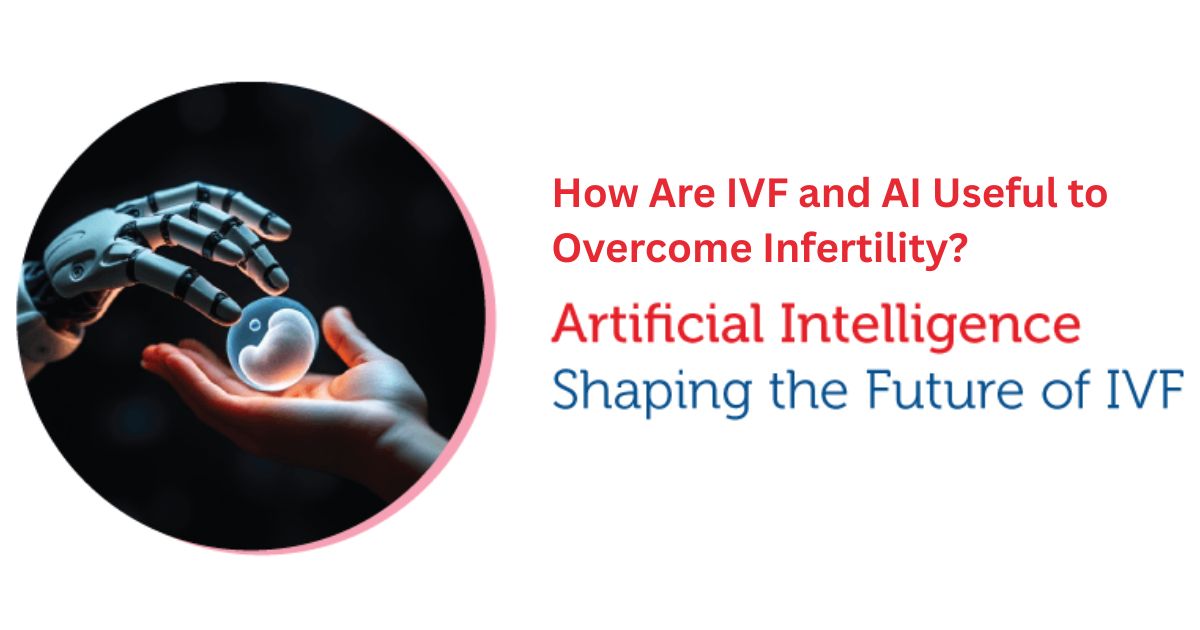1. Introduction: The Evolution of AI-Powered Content Creation
The world of content creation has entered a new era - one defined by intelligence, automation, and limitless creativity.
In just a few short years, artificial intelligence has transformed from a technical novelty into an indispensable creative companion.
Marketers, copywriters, and content creators across industries are now harnessing AI tools for content creation to write smarter, design faster, and tell more engaging stories than ever before.
By combining machine learning, natural language processing (NLP), and predictive analytics, these tools can:
-
Generate high-quality blog posts in minutes.
-
Design visually stunning graphics with a single prompt.
-
Create videos complete with human-like avatars and voices.
-
Analyze audience behavior and predict what content will perform best.
This guide reveals the best AI tools for content creation in 2025 - with expert insight, detailed comparisons, and use cases for every type of creator.
Before going deeper into the next section, you can refer to best tools for content creation to support your work.
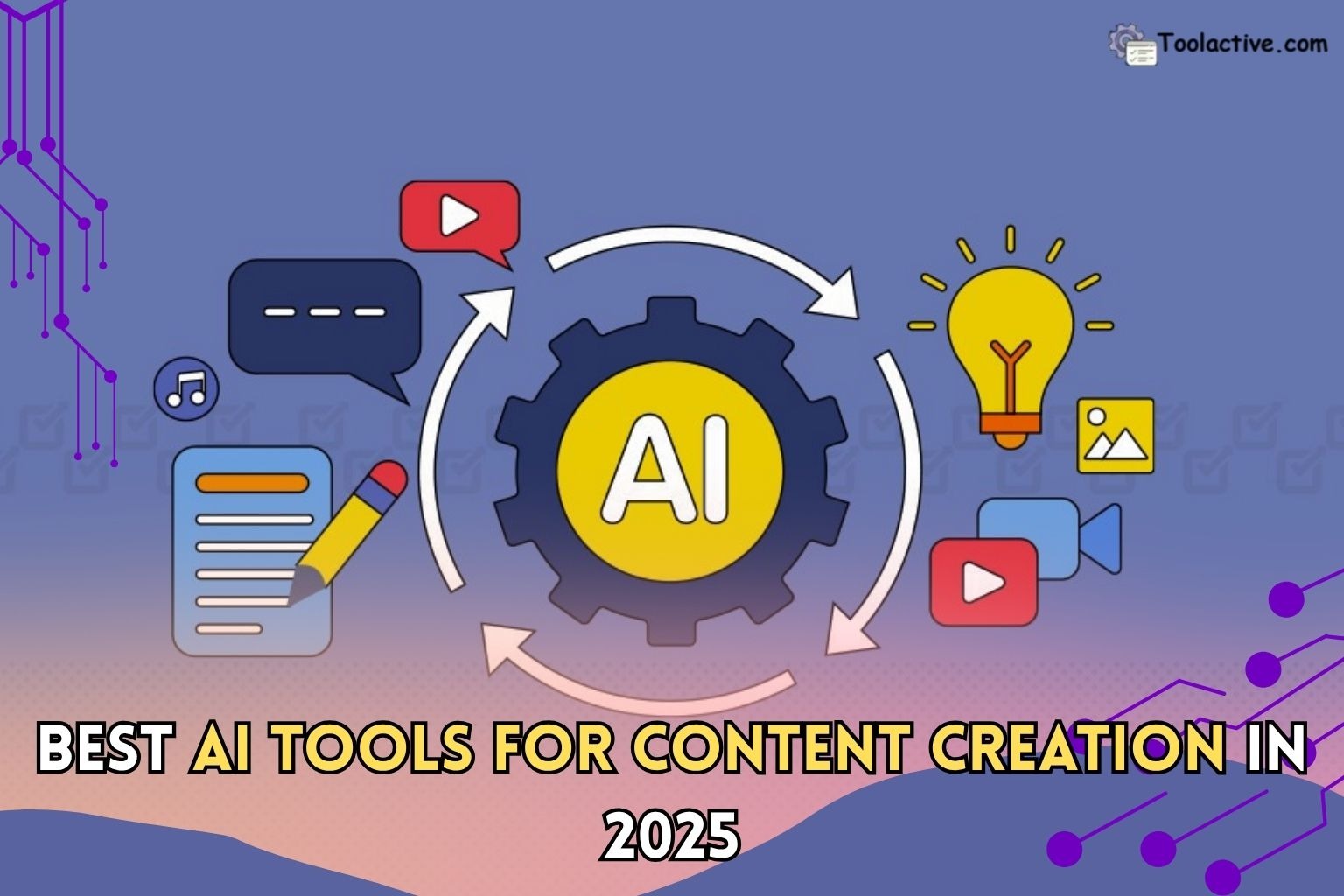
2. What Are AI Tools for Content Creation?
AI content tools are software systems that use artificial intelligence to assist in or automate parts of the creative process - from ideation to publication.
These systems rely on large language models (LLMs), computer vision, and neural networks trained on massive datasets of human text, imagery, and audio.
Common types include:
-
AI writing assistants (e.g., Jasper, Writesonic)
-
AI design platforms (e.g., Canva Magic Studio)
-
AI video creators (e.g., Synthesia, Pictory)
-
AI content generators (e.g., Copy.ai, Rytr)
-
AI research and SEO tools (e.g., Frase.io, Surfer)
They streamline creative workflows, eliminate repetitive tasks, and empower teams to scale content production - all while maintaining brand consistency.
3. Why Marketers Need AI Content Tools in 2025
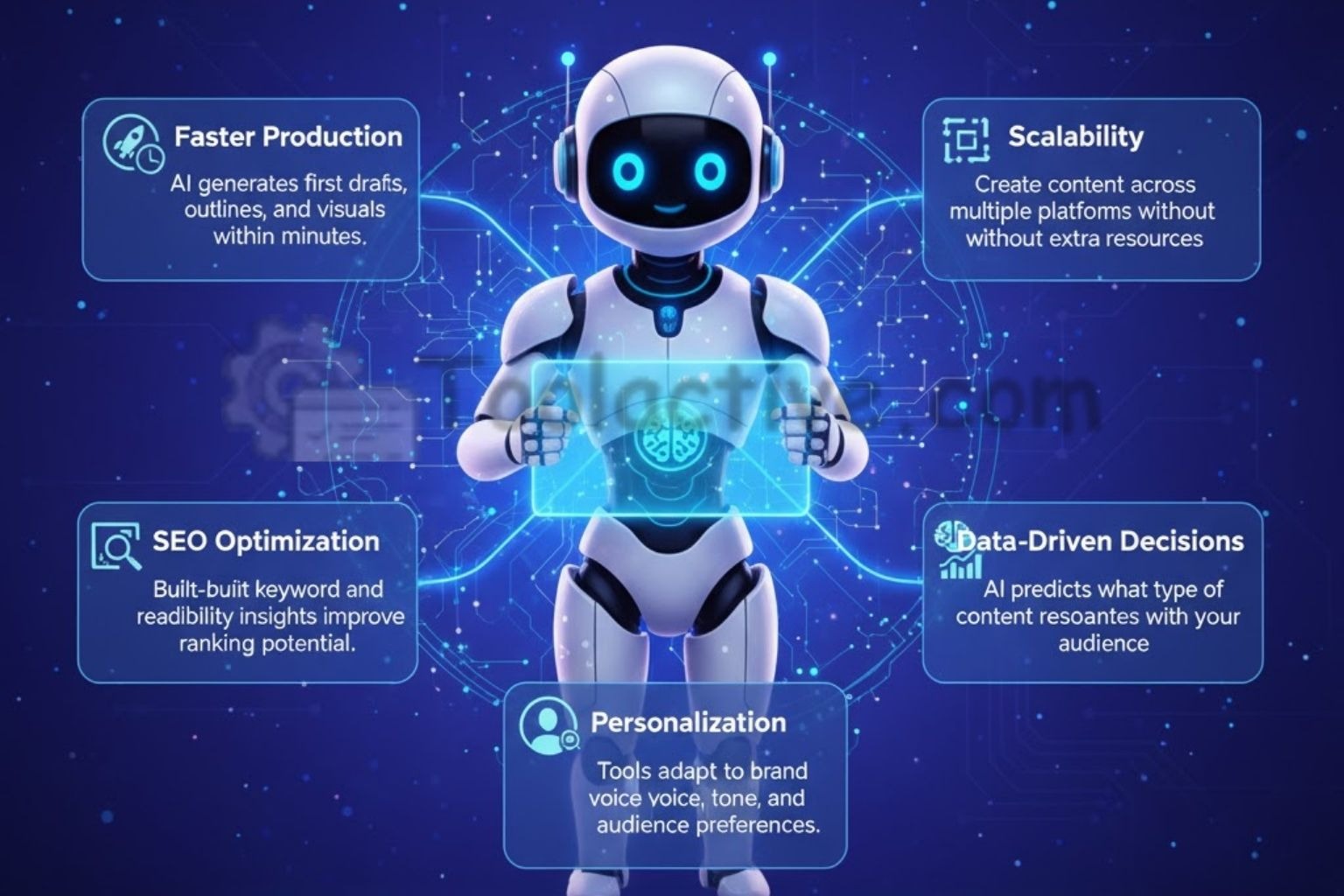
The demand for digital content has exploded - blog articles, YouTube videos, social reels, newsletters, and ads compete for attention in every feed.
But traditional content workflows can’t keep up.
That’s where AI content tools become essential.
Key benefits include:
-
Faster production: AI generates first drafts, outlines, and visuals within minutes.
-
Scalability: Create content across multiple platforms without extra resources.
-
SEO optimization: Built-in keyword and readability insights improve ranking potential.
-
Data-driven decisions: AI predicts what type of content resonates with your audience.
-
Personalization: Tools adapt to brand voice, tone, and audience preferences.
AI doesn’t just save time - it expands creative potential.
4. The Technology Behind AI Content Creation
Understanding what powers these tools helps you use them strategically.
At their core, AI content creation platforms are built on three main technologies:
4.1 Natural Language Processing (NLP)
This allows tools like Jasper or Copy.ai to “understand” prompts and produce human-like language.
4.2 Machine Learning and Neural Networks
These algorithms learn from data patterns - enabling tools to improve their predictions, tone, and accuracy over time.
4.3 Generative Models
Systems such as GPT-4 or Google’s Gemini use deep neural networks to generate original text, visuals, or audio based on input data.
Together, these innovations allow modern content AI tools to craft stories, analyze trends, and even emulate brand personalities.
5. The Top 10 Best AI Tools for Content Creation (2025 Edition)
Let’s explore the most effective and popular AI content tools currently shaping the digital marketing landscape.
5.1 Jasper - Best for Brand Voice and Long-Form Writing
Jasper remains a dominant force among AI content writers. It produces blog posts, ad copy, emails, and social media captions - all aligned with your unique tone of voice.
Key Features:
-
Brand Voice customization
-
Templates for over 50 content types
-
SEO integration with Surfer
-
Collaboration tools for teams
Ideal For: Marketing agencies, content strategists, and SaaS companies.
5.2 Copy.ai - Best for Copywriting and Short-Form Content
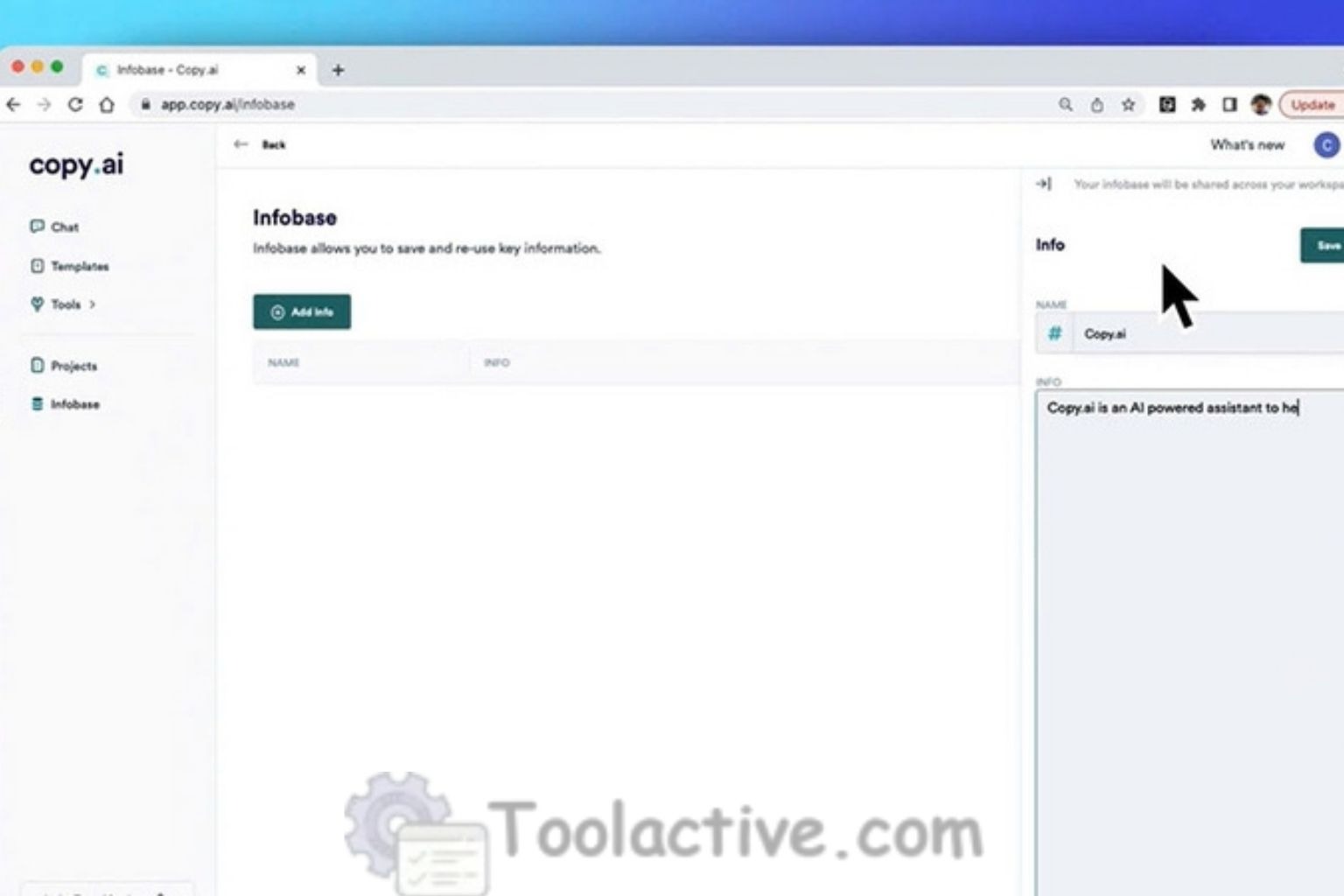
Copy.ai is perfect for marketers focused on quick, catchy, high-impact messaging.
Key Features:
-
90+ copy templates
-
Tone and emotion control
-
Multilingual output
Ideal For: Social media managers and advertisers.
5.3 Writesonic - Best for SEO and Multi-Channel Content

Writesonic integrates AI writing, SEO tools, and chatbot creation - a true all-rounder.
Key Features:
-
Keyword optimization
-
Real-time factual checking
-
Integrated image generator
Ideal For: Bloggers, SEO experts, and eCommerce teams.
5.4 GrammarlyGO - Best for Polishing and Editing
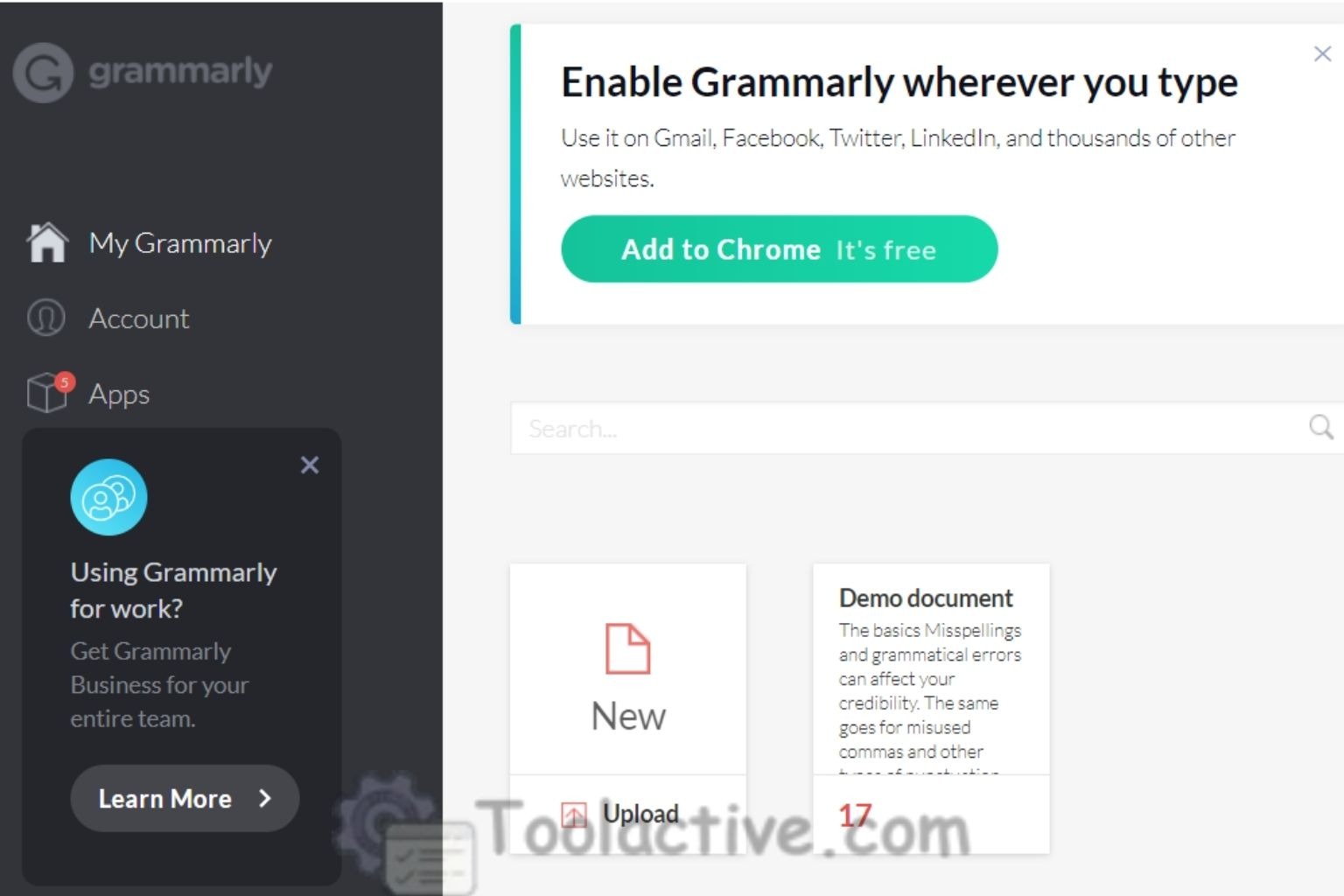
More than grammar correction, GrammarlyGO rewrites content based on tone and intent.
Key Features:
-
Tone suggestions
-
Rewrite and summarize functions
-
Integration across browsers and apps
Ideal For: Professionals refining communication and clarity.
5.5 Canva Magic Studio - Best for Visual and Social Content

Canva’s AI suite, Magic Studio, is revolutionizing how creators build visuals.
Key Features:
-
Magic Write for instant copy
-
Magic Edit and Erase for visuals
-
AI video captions and resizing
Ideal For: Social media marketers and brand designers.
5.6 Synthesia - Best for AI-Generated Videos
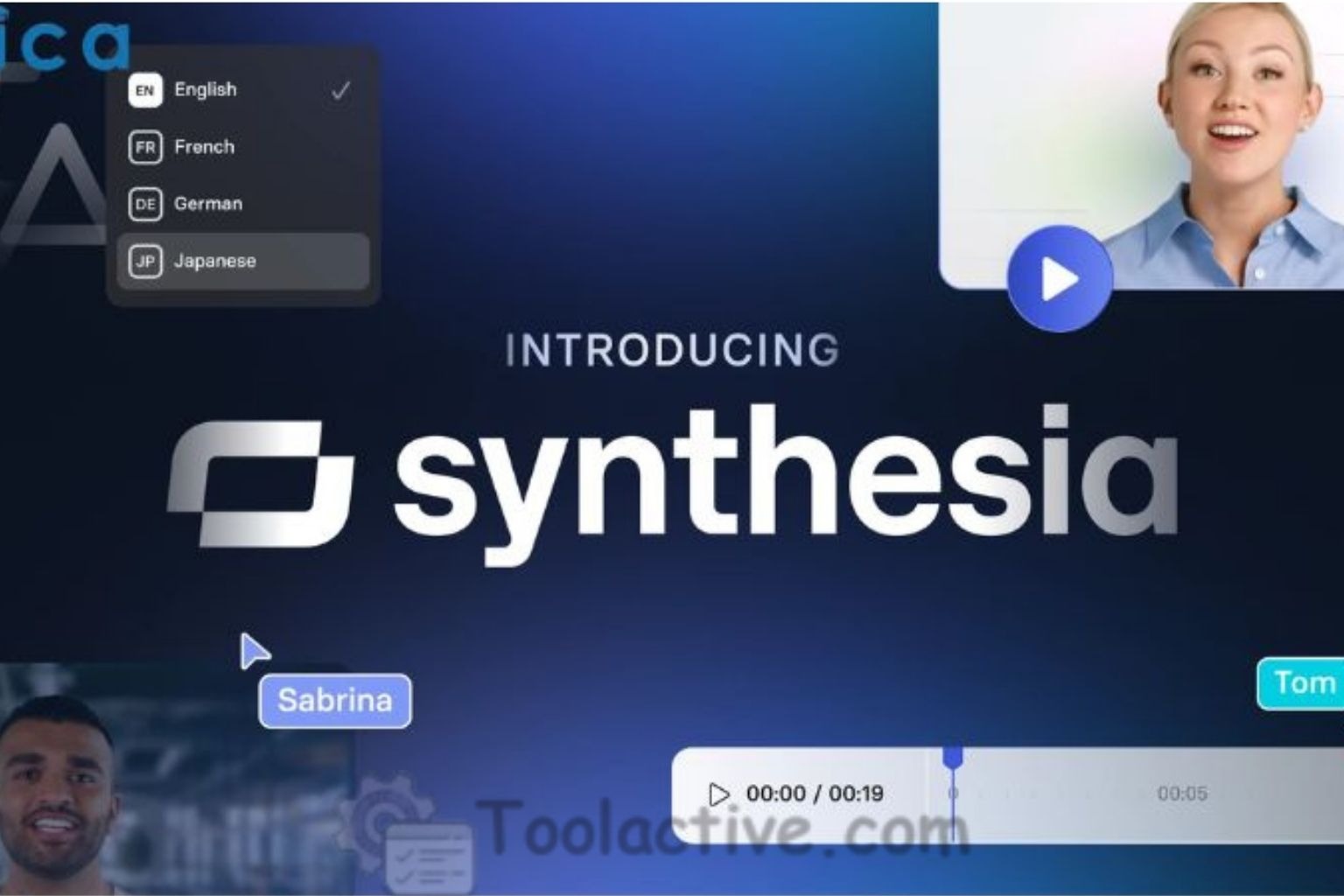
Synthesia allows users to produce professional-quality videos without cameras or actors.
Key Features:
-
140+ avatars and 120+ languages
-
Custom avatar creation
-
Automatic voiceover generation
Ideal For: Training videos, YouTube content, and corporate presentations.
5.7 Descript - Best for Podcast and Video Editing

Descript lets creators edit video as easily as editing a Word document.
Key Features:
-
Text-based editing
-
AI overdubbing
-
Studio sound and filler removal
Ideal For: Podcasters and video creators.
5.8 Notion AI - Best for Ideation and Productivity

Notion AI boosts productivity by generating ideas, summaries, and outlines directly within your workspace.
Key Features:
-
AI brainstorming
-
Automatic note summarization
-
Knowledge management integration
Ideal For: Project managers and creative teams.
5.9 Pictory - Best for Video Repurposing

Pictory converts long-form content (webinars, podcasts) into shareable short clips.
Key Features:
-
Automatic scene detection
-
Captions and voiceovers
-
Cloud-based editing
Ideal For: Content repurposing and social media teams.
5.10 Frase.io - Best for Research and SEO Optimization
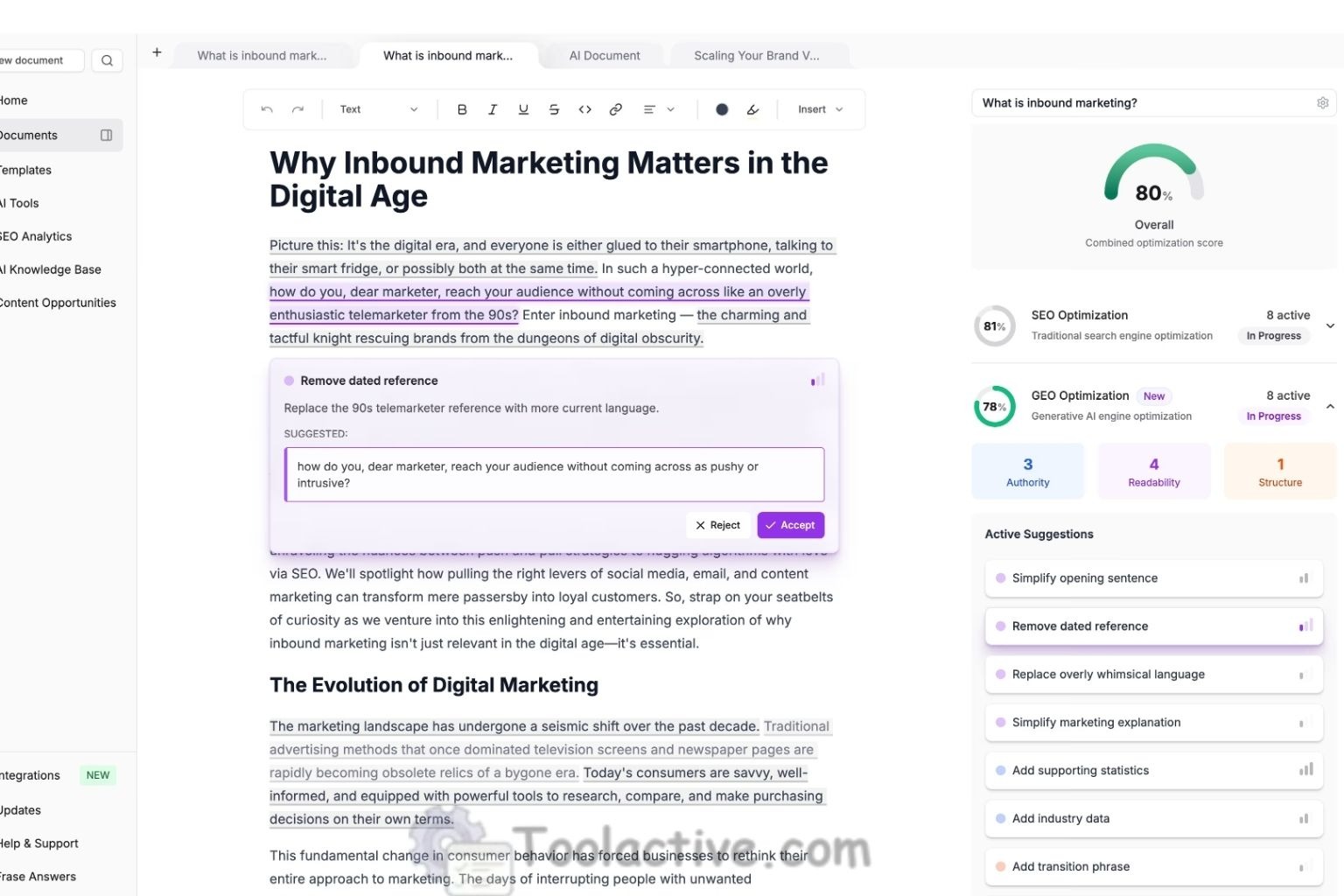
Frase.io automates SEO research and outlines, making it a must-have for blog strategies.
Key Features:
-
SERP analysis
-
Topic clustering
-
Built-in content scoring
Ideal For: SEO writers and strategists.
6. Best Free and Freemium AI Content Tools
If you’re just getting started, these free AI content tools offer incredible value:
-
ChatGPT Free: Great for idea generation and drafting.
-
Canva Free: Ideal for creating branded social posts.
-
Rytr: Excellent for short-form writing on a budget.
-
Notion AI Free Trial: Streamlines organization and creative workflows.
-
Pictory Free Trial: Turns existing videos into short-form clips.
Freemium tools provide an easy entry point before upgrading to advanced versions.
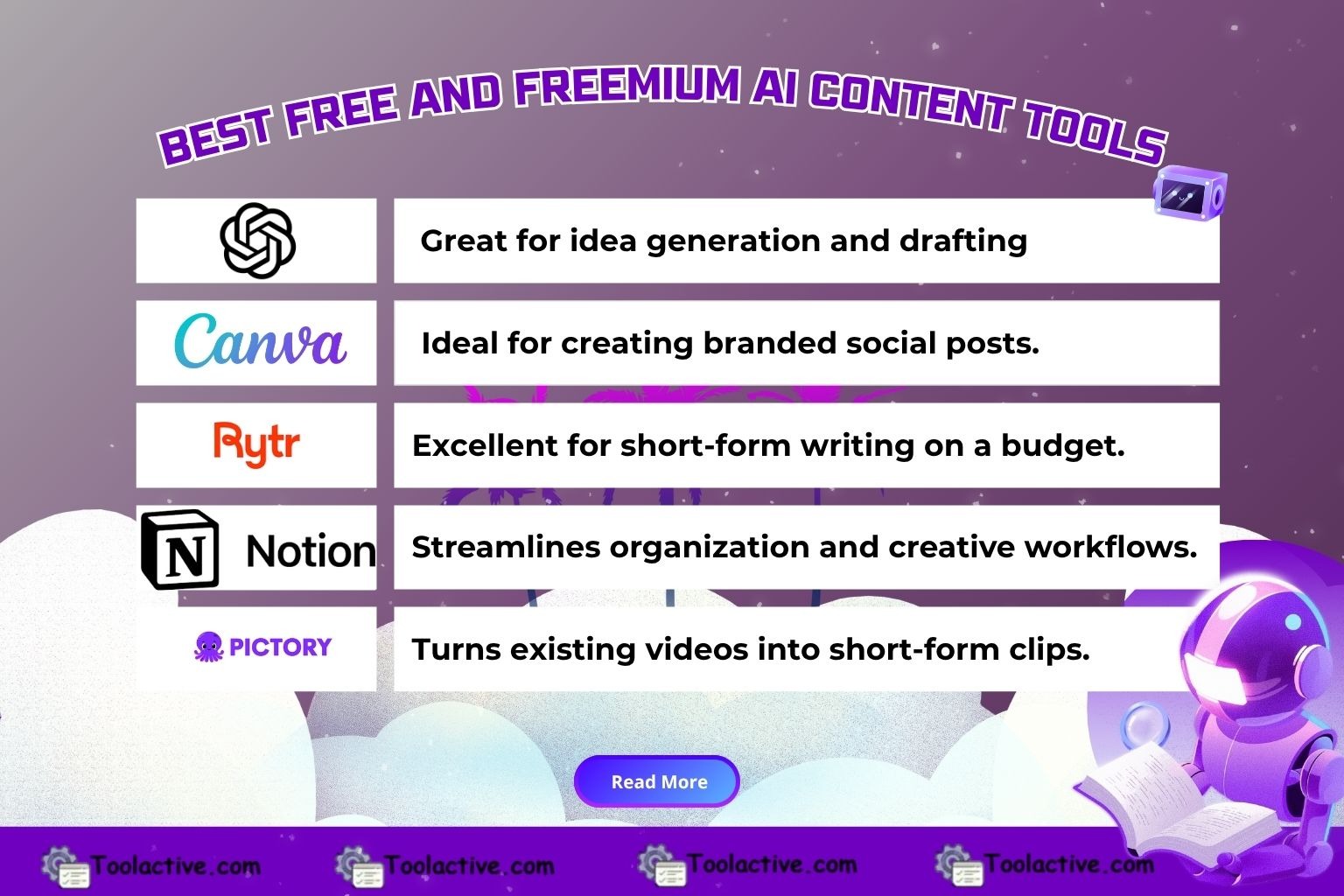
7. How to Choose the Right AI Content Tool
When selecting the best AI content generator for your needs, consider:
7.1 Purpose
Are you focusing on writing, visuals, or video? Choose specialized tools for each.
7.2 Features
Compare automation capabilities, templates, and integrations.
7.3 Pricing
Balance subscription costs with your production volume.
7.4 Team Collaboration
If you manage teams, choose platforms with multi-user support.
7.5 Security and Data Ethics
Select providers that prioritize privacy and clear usage rights for generated content.

8. Best Practices for Using AI in Content Creation
8.1 Combine Human Oversight and AI Speed
AI drafts quickly - but human creativity adds emotional depth and storytelling.
8.2 Maintain Brand Authenticity
Always train your AI tools with examples of your tone, values, and preferred language.
8.3 Check for Accuracy
Fact-check every output before publication.
8.4 Use Prompts Strategically
The quality of your input determines the quality of output. Experiment with detailed prompts.
8.5 Optimize for SEO
Use AI for keyword discovery, meta generation, and readability enhancement.
If you want to explore more automation support tools, you can see the list of content marketing tools list.
9. Case Studies: AI Tools Transforming Real Businesses
Case 1 - A SaaS Startup
Using Jasper + Frase.io, a SaaS brand increased content output by 220%, reducing editorial time from 4 days to 1.
Case 2 - Marketing Agency
An agency combined Canva Magic Studio and Copy.ai to automate ad campaigns - saving 40% on creative production costs.
Case 3 - YouTube Creator
A solo content creator used Synthesia and Pictory to generate 30+ videos monthly without a camera crew.
AI doesn’t just improve efficiency - it redefines creative economics
10. The Future of AI in Content Creation
AI has evolved from a creative assistant to a strategic partner. In the next five years, its role will become even more dynamic - blurring the line between human imagination and machine intelligence.
Here’s what’s coming next:
10.1 Hyper-Personalized Content
AI will use behavioral data and predictive analytics to craft content tailored to individual preferences - from product recommendations to tone adjustments in real time. Imagine blog articles or emails that automatically rewrite themselves based on the reader’s mood or engagement pattern.
10.2 Real-Time Creativity
AI systems like Runway or Pika are pioneering instant video generation - turning ideas into full cinematic outputs in seconds. This evolution will redefine storytelling speed and accessibility.
10.3 Voice and Multimodal Content
The next generation of AI content tools will merge voice, text, and visuals in one seamless workflow. You’ll prompt a single idea, and the platform will return an entire campaign - complete with script, graphics, and video.
10.4 AI-Driven Insights and Strategy
Beyond creation, AI will soon handle content strategy itself. Tools like MarketMuse and HubSpot AI are already moving in this direction - analyzing performance metrics to predict what kind of content will bring the best ROI.
10.5 Ethical and Creative Synergy
As AI matures, regulations and ethics will shape its evolution. Transparency, consent, and originality will define which tools survive and which fade away.
In the future, the most successful creators won’t be the ones who fear AI - but the ones who master it.
11. Expert Insights & Real-World Experience
As someone who has spent more than five years testing and integrating AI tools for content creation, I can confidently say: not all tools are created equal - and not every feature matters equally for every team.
Here’s my take from hands-on experience with the most popular tools:
11.1 Jasper - The Strategist’s Choice
I’ve used Jasper since its early days, and its ability to capture brand voice remains unmatched. When working on multi-client content calendars, Jasper helps maintain tone consistency while cutting ideation time by half.
If your brand produces long-form or thought-leadership pieces, Jasper is absolutely worth the investment.
11.2 Copy.ai - The Creative Spark
Copy.ai shines for rapid creative brainstorming. I often use it to draft taglines, headlines, and ad hooks when brainstorming campaign concepts. It doesn’t just speed things up - it inspires new directions I wouldn’t have thought of manually.
11.3 Canva Magic Studio - The Visual Game-Changer
Canva’s AI suite has transformed how my teams produce visuals. What used to take hours of Photoshop editing now happens in minutes - Magic Erase, Magic Expand, and automatic resizing are true lifesavers for content teams managing multiple formats daily.
11.4 Synthesia & Pictory - The Video Revolution
Video is the hardest format to scale. But with tools like Synthesia and Pictory, even small teams can produce professional videos. In one case, a startup I advised cut production costs by 80% while tripling video output. The AI avatars are shockingly realistic - and only getting better.
11.5 Frase.io - The SEO Workhorse
Frase.io is one of my personal favorites for research. When creating blog content strategies, I use it to analyze SERPs, cluster keywords, and build optimized outlines. It’s like having a full-time SEO analyst - only faster and cheaper.
11.6 Notion AI - My Everyday Companion
Notion AI has become indispensable for organizing everything from editorial calendars to meeting notes. It’s the glue that keeps the creative workflow structured - an underrated powerhouse in the AI ecosystem.
After years of testing dozens of tools, I’ve learned this golden rule:
“AI doesn’t replace creativity - it amplifies it. The creators who learn to delegate the right tasks to AI will outpace everyone else.”
12. User Personas & Use Cases
Let’s explore how different professionals can use AI content tools effectively in 2025:
12.1 For Marketers and Content Strategists
-
Use Case: Automate blog creation, SEO optimization, and campaign performance analysis.
-
Tools: Jasper, Frase.io, Writesonic.
-
Result: Faster publishing cycles, consistent tone, higher SERP ranking.
12.2 For Designers and Creative Teams
-
Use Case: Generate ad visuals, video storyboards, and branded assets.
-
Tools: Canva Magic Studio, Runway, Midjourney.
-
Result: Streamlined creative workflow and rapid iteration without sacrificing quality.
12.3 For Video Creators and YouTubers
-
Use Case: Convert scripts into video, add AI avatars and voiceovers.
-
Tools: Synthesia, Pictory, Descript.
-
Result: High-quality video output without traditional editing constraints.
12.4 For Agencies and Freelancers
-
Use Case: Manage multiple client campaigns while maintaining quality control.
-
Tools: Notion AI, Copy.ai, GrammarlyGO.
-
Result: Improved productivity, collaborative efficiency, and consistency across deliverables.
12.5 For Entrepreneurs and Startups
-
Use Case: Build brand content from scratch with limited budget and resources.
-
Tools: Rytr, Canva Free, ChatGPT.
-
Result: Affordable content creation that scales as the business grows.
AI is no longer a privilege of big marketing departments - it’s a scalable advantage for everyone.
13. Common Challenges and How to Overcome Them
Even with all these advantages, integrating AI into creative workflows isn’t frictionless.
Here are the biggest challenges - and how to manage them effectively:
13.1 Generic or Repetitive Output
AI tends to produce templated or formulaic writing if prompts are too broad.
Solution: Use detailed, context-rich prompts and fine-tune tone settings.
13.2 Overdependence on Automation
Excessive reliance on AI can dull human creativity.
Solution: Use AI for structure and inspiration - but let human insight drive storytelling.
13.3 Data Privacy and Copyright
Generated outputs might raise ownership concerns.
Solution: Always check each platform’s content policy and maintain original sources when referencing data.
13.4 Lack of Team Training
AI tools only perform as well as their users.
Solution: Train your team to write effective prompts, analyze output quality, and edit with precision.
By anticipating these issues, you can maximize your tool’s value and avoid common pitfalls.
14. Integration: Building an AI-Driven Content Workflow
The true power of AI emerges when tools work together.
Here’s how to create a fully integrated, intelligent content pipeline:
-
Ideation & Research → Use Frase.io or Notion AI for brainstorming and topic analysis.
-
Drafting & Writing → Use Jasper or Copy.ai for first drafts and outlines.
-
Optimization & Editing → Apply GrammarlyGO for polishing and SEO refinement.
-
Design & Visuals → Use Canva Magic Studio for branding assets.
-
Video & Repurposing → Use Synthesia or Pictory for cross-platform content.
-
Publishing & Tracking → Integrate everything via HubSpot or Zapier automation.
This synergy ensures that your entire content ecosystem - from ideation to analytics - operates faster, smarter, and with higher ROI.
15. The Role of Toolcative in the AI Content Ecosystem
At Toolcative, we continuously analyze, test, and review the evolving landscape of AI-powered tools.
Our goal is to simplify discovery for marketers, entrepreneurs, and creators - helping them find tools that match their workflow, goals, and budget.
We believe AI isn’t just about productivity - it’s about empowerment.
By curating the best AI content tools, Toolcative enables creators to spend less time managing and more time imagining.
Visit Toolcative’s upcoming AI directory to compare performance, pricing, and use cases across hundreds of AI solutions.
16. Frequently Asked Questions (FAQ)
1. What are AI tools for content creation?
AI tools for content creation are software platforms that use artificial intelligence to help users generate written, visual, or video content. They automate tasks like blog writing, image design, video editing, or SEO optimization. Examples include Jasper for writing, Canva Magic Studio for visuals, and Synthesia for video generation.
2. Are AI content tools replacing human creativity?
Not at all. AI tools are assistants, not replacements. They help speed up repetitive or technical tasks so that creators can focus on storytelling, strategy, and innovation. The best results come when AI and human creativity work together.
3. What is the best AI tool for writing content?
If you’re looking for versatility, Jasper is often considered the best overall AI writing assistant in 2025. It supports tone customization, SEO prompts, and brand voice control. For short-form copy like ads or captions, Copy.ai and Anyword are strong alternatives.
4. Which AI tool is best for visual content creation?
For graphics, Canva Magic Studio leads the field. It lets you generate design ideas, remove backgrounds, and resize visuals automatically. If you want more control and realism, Adobe Firefly and Midjourney are excellent options for advanced design and photography.
5. Can AI tools really help with video creation?
Yes - and they’re transforming the process. Tools like Synthesia, Pictory, and Runway enable users to generate professional-grade videos without filming or editing manually. You can turn scripts into AI-narrated videos in minutes.
6. What are the benefits of using AI tools for content creation?
-
Speed: Produce content up to 5x faster.
-
Consistency: Maintain tone and branding across all platforms.
-
Scalability: Manage high-volume campaigns easily.
-
Creativity: Spark new ideas with AI brainstorming tools.
-
Optimization: Improve engagement with built-in SEO and analytics.
7. Are AI content tools suitable for small businesses?
Absolutely. Many AI tools offer freemium plans or affordable tiers for startups. Tools like Rytr, Notion AI, and Canva Free are perfect entry points for small teams looking to scale content production without hiring large creative departments.
8. How accurate is AI-generated content?
AI-generated content has become impressively accurate - but it still needs human editing. The best practice is to use AI for first drafts or ideation, then refine with human judgment for accuracy, tone, and authenticity.
9. Are there risks in using AI for content creation?
Yes, but they can be managed. Common risks include plagiarism, generic writing, and data privacy concerns. To mitigate these, choose trusted AI tools with transparent data policies, fact-check all outputs, and always inject human review into your workflow.
10. How do I choose the best AI content tool for my needs?
Ask yourself:
-
What type of content do I create (blog, video, design, or ads)?
-
Do I need SEO optimization or creative brainstorming?
-
What’s my budget and team size?
Then test a few tools with free trials. For example: -
Writers: Jasper, Frase, Copy.ai
-
Designers: Canva, Midjourney
-
Video creators: Synthesia, Pictory
-
Marketers: HubSpot AI, Scalenut
11. How can I integrate AI tools into my content workflow?
Start small. Use one AI tool per stage - for instance, Frase.io for research, Jasper for writing, and GrammarlyGO for editing. Then connect them via platforms like Zapier or Notion AI to automate your process end-to-end.
12. What are the best free AI content creation tools?
Here are some popular free or freemium options in 2025:
-
ChatGPT Free - great for writing and brainstorming.
-
Canva Free - for quick, quality visuals.
-
Pictory Free Trial - basic video automation.
-
Rytr - limited but effective writing tool.
-
Notion AI - free for note generation and summaries.
13. Can AI tools help improve SEO performance?
Yes. Tools like Surfer SEO, Frase.io, and Scalenut analyze search trends and recommend keywords, headings, and readability improvements - turning your content into an SEO powerhouse.
14. What’s the future of AI content creation?
Expect multi-modal AI systems that generate everything - blogs, visuals, and videos - from a single prompt. AI will become the core of every marketing department, integrating creativity, analytics, and personalization at scale.
15. Where can I compare the best AI content tools?
You can explore Toolcative, a growing platform dedicated to reviewing, testing, and comparing the world’s top AI tools for marketing, writing, and creativity. It helps you find the perfect tool based on your industry, goals, and budget.
Check our Sembly AI collection
17. Conclusion: The Future Belongs to the AI-Enhanced Creator
The age of AI content creation is just beginning.
From intelligent writing assistants to generative video platforms, these technologies are not replacing creativity - they’re redefining it.
As marketers, we stand at a crossroads: those who embrace AI will create faster, smarter, and at greater scale. Those who resist it may struggle to keep up.
Whether you’re a freelancer, agency, or enterprise - the key is to start experimenting now.
Learn your tools, refine your prompts, and let AI amplify what makes your voice unique.
The best content of tomorrow won’t be written by machines alone - it will be co-created by humans who know how to use them wisely.

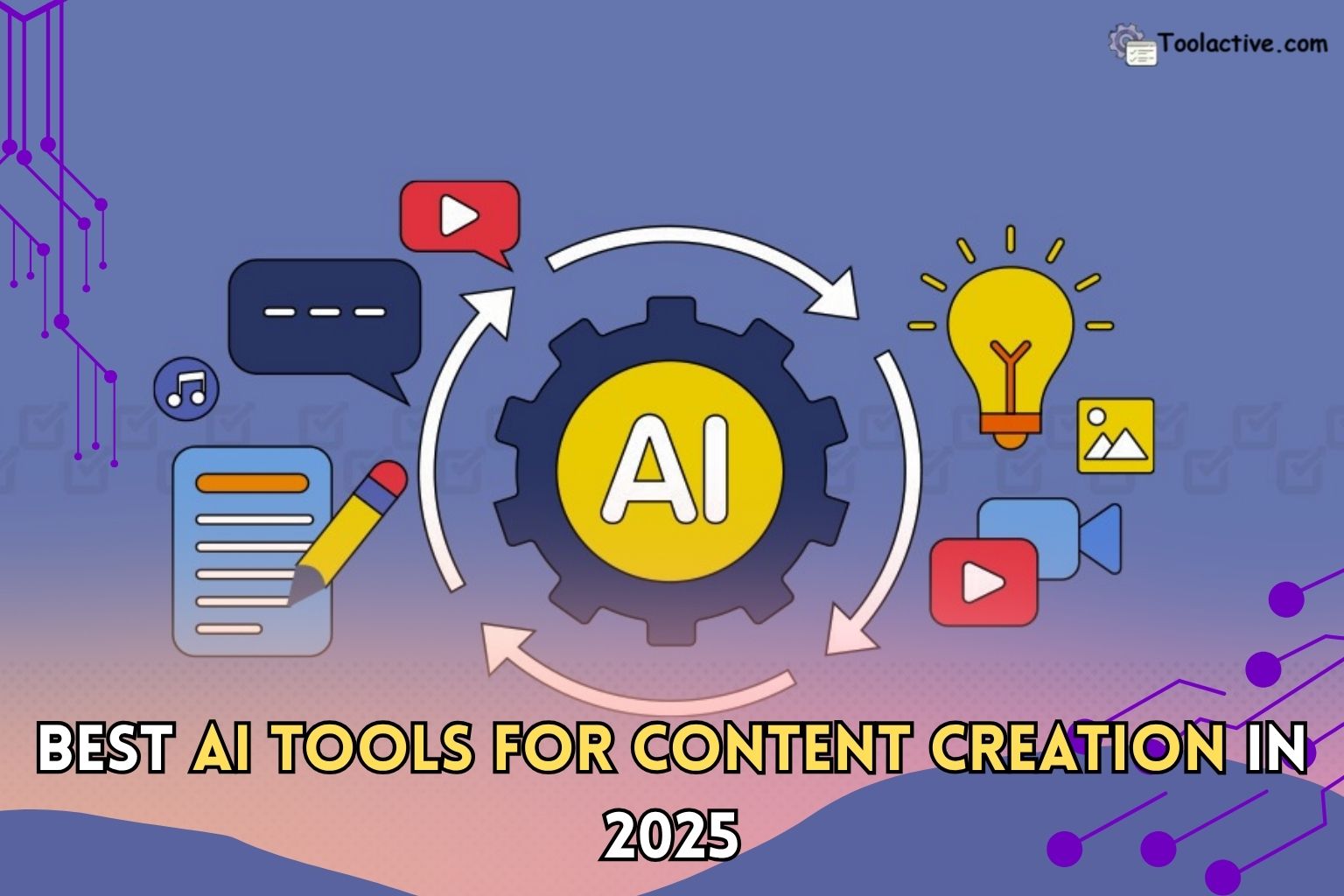





.jpg)

